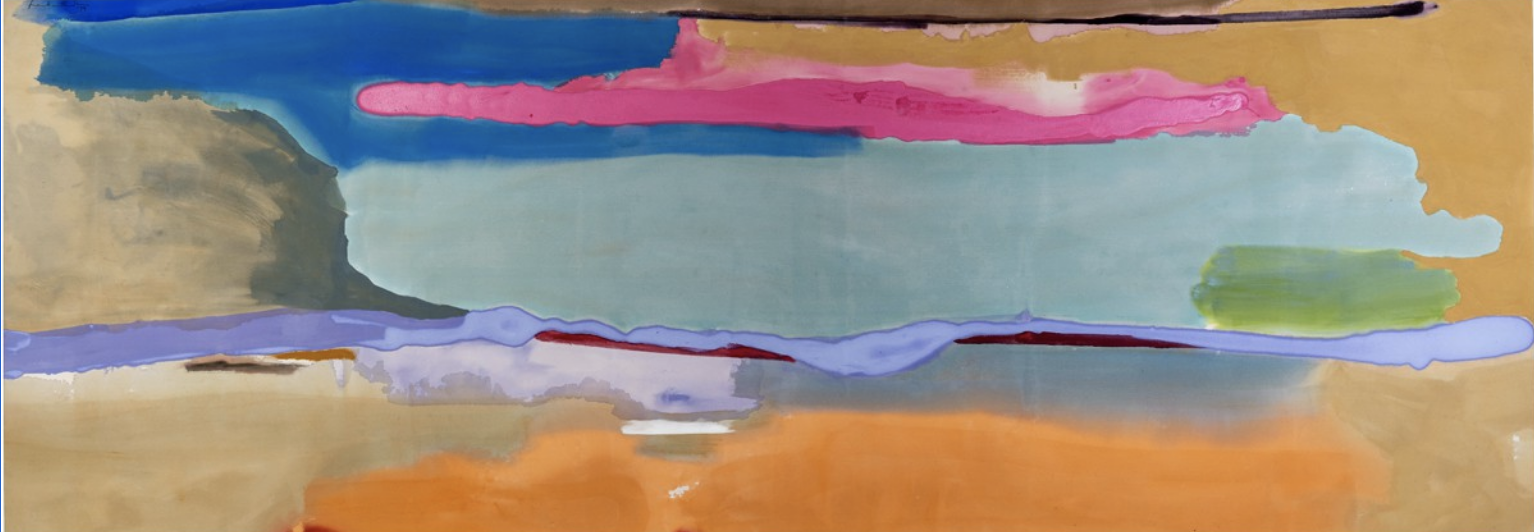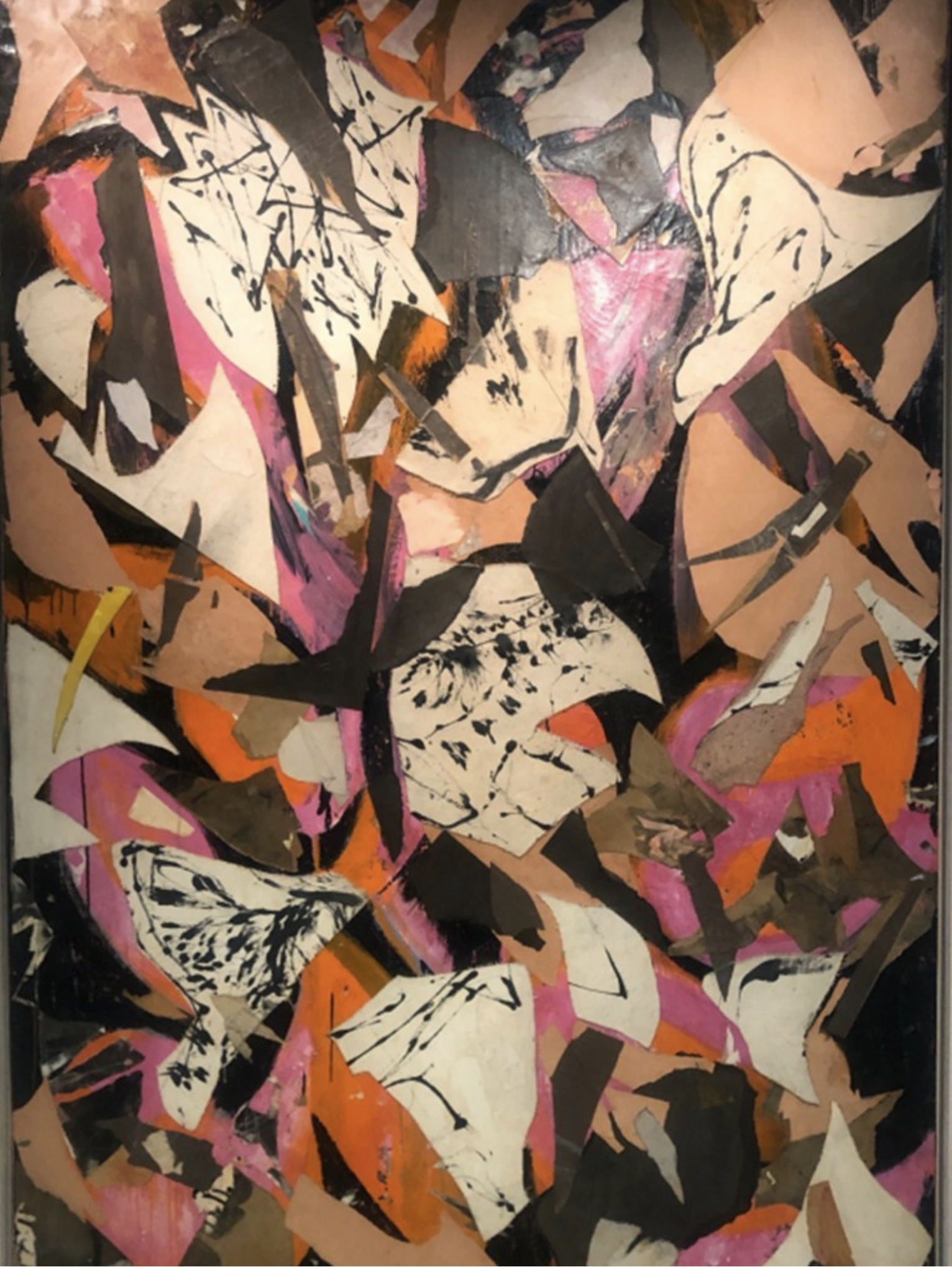Female Abstract Artists: If You Want To Change the Product, Change the Process – And If You Want To Change the Story, Change the Narrator
Helen Frankenthaler, April Mood, 1974 © 2023 Helen Frankenthaler Foundation, Inc./Artists Rights Society (ARS), New York. Photo: courtesy ASOM Collection
I recently attended an excellent exhibition of the work of women abstract painters from the 1940s to the early 1970s. (‘Action, Gesture, Paint’ is at the Whitechapel Gallery, London until 7 May.)
On entering the gallery, you’re greeted by Helen Frankenthaler’s ‘April Mood’, a joyous choreography of colour: royal and pale blue, purple and radiant pink, set against a base of sandstone and tangerine.
‘A really good picture looks as if it’s happened at once. It’s an immediate image.’
Helen Frankenthaler
There follows a selection of work by some 80 artists from all over the world. Big, bold, vibrant canvases. Audacious expressions of raw experience: joy, awe, anger and despair. Emotional responses to a world in crisis and to the beauties of nature.
'I paint from remembered landscapes that I carry with me - and remembered feelings of them, which of course become transformed.’
Joan Mitchell
These artists were liberated from the constraints of tradition and convention. As Ida Barbarigo declared, they wanted to ‘unlearn painting,’ to forget academic teaching.
I was particularly struck by the inventiveness of their working methods.
Some layered the paint on thick. Some scraped it and scratched it. Others spattered, splashed and sprayed; and liberally added dribbles and stains. Their gestures were occasionally spontaneous and occasionally controlled. Some mixed their paint with other materials: sand, sawdust, cigarette ash and cement; lacquer, chalk and carpenter’s glue.
Work, 1958-62, by Yuki Katsura. Image: Courtesy Alice and Tom Tisch, New York © Estate of Yuki Katsura
‘My paintings are collaged bits of time from my past and present experiences.’
Wook-kyung Choi
Frankenthaler achieved her fluid, organic effects by thinning her paint and applying it to unprimed canvas. Gillian Ayres worked at speed, pouring paint straight from the can, or squirting it directly from the tube. Lee Krasner integrated into her work cut-up fragments of newspapers, burlap and discarded drawings. Yuki Katsura placed wet washi paper on painted canvas and then overpainted it. Franciszka Themerson tilted her paper so that the enamel flowed in loose, curving calligraphic forms. Janet Sobel trickled pigment from a pipette (well before Jackson Pollock adopted his celebrated ‘drip technique’).
The exhibition repeatedly confirms a truth that pertains to any creative endeavour: if you want to change the product, change the process.
‘To me, art - colour in art – is wonderfully indulging… I don’t see why you shouldn’t be filling yourself up, making yourself happy. Enjoying yourself. Feasting on beauty. I want an art that’s going to make me feel heady, in a high flown way. I love the idea of that.’
Gillian Ayres
Lee Krasner, Bald Eagle, 1955 (Credit: The Pollock-Krasner Foundation)
One wanders through the exhibition with a faint sense of recognition. Many of these ideas, themes and approaches are familiar to us. But, with a few exceptions, the works and the artists are not.
The story of Abstract Expressionism, the art movement that emerged in New York in the late 1940s is classically written around titanic male figures like Jackson Pollock, Willem de Kooning and Mark Rothko.
There were women artists on the scene, but it was a notoriously machismo culture. Corinne West painted under the name Michael West so as to disguise her gender. Elaine de Kooning signed her work with her initials to evade comparisons with her husband. Grace Hartigan became George and Lena Krasner became Lee.
'It’s quite clear I didn’t fit in. With relation to the group, if you are going to call them a group, there was not room for a woman.'
Lee Krasner
Elaine de Kooning The Bull 1959 (1) - Whitechapel Gallery
Over time the women abstract artists were marginalised or written out of the movement’s history. Recent retrospectives have included few females.
The Whitechapel exhibition endeavours to right this wrong. Regarding the past through a different lens, it changes our perception of something we thought we knew. And in so doing it has quite an uncanny effect. It is at once both familiar and fresh.
The show demonstrates that if you want to change the story, you should consider changing the narrator.
'… Sitting at this party,
Wondering if anyone knows me,
Really sees who I am.
Oh, it's been so long since I felt really known.
… Living in the wake of overwhelming changes,
We've all become strangers
Even to ourselves.
We just can't help,
We can't see from far away,
To know that every wave might not be the same,
But it's all apart of one big thing.
… Oh, it's not just me, it's not just me,
It's not just me,
It's everybody.’
Weyes Blood, 'It’s Not Just Me, It’s Everybody’ (N Mering)
No. 409



